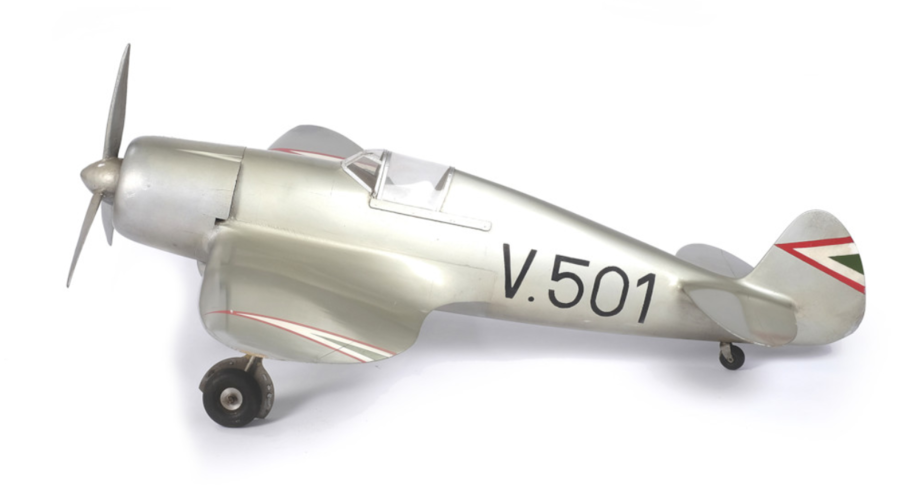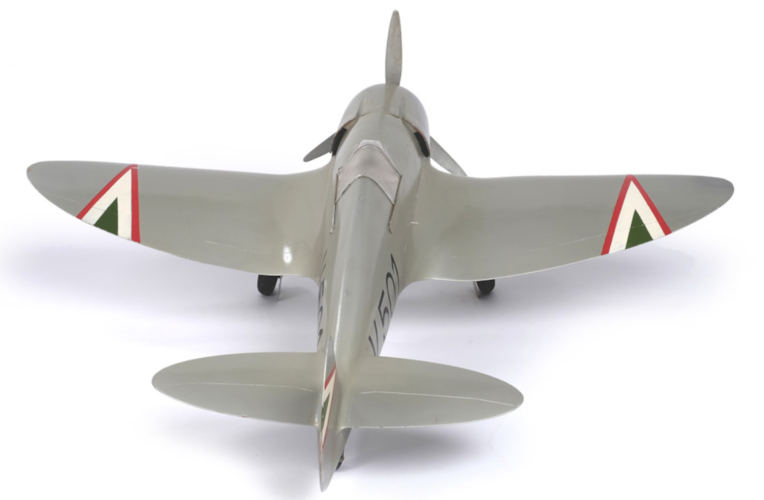Of course Justo , building aircraft with duraluminum it was unfamiliar for italian aircraft industries for limited raw resources.The Italians did not adapt well to Seversky's manufacturing methods and the result was excessive structural complexity.My understanding was that the He112 structure was heavy, expensive, and complex. I'd have thought that the gull wing alone would create complexities and weight penalties. The main issue with the Re2000 being its integral wing fuel tanks, which were inspired by American practice and thus unfamiliar.Reggiane fighters had an extremely complex structure and required a hell of working hours to be produced, that is the key reasons Reggiane's figther were never mass produced and inducted in Italian service even if they were always better than their main direct competitors (mc 200 and G50 for the 2000, MC 202 for the 2001 and G55 and MC205V for the 2005)True, but does anyone know why Hungary was pursuing the He112 when they had the Re2000? The latter was in the same class, seems structurally simpler, and we know, at least with hindsight, that Reggiane airframe could take the DB605G.Not! instead a He-112 with Wm K-14 engine....the project seems was started from core of reggiane 2000 ! :
I have structural manuals or excerpts for the Re.2000, G.50, and MC.205V. While I admit that I have never actually built an airplane, the Re.2000 structure does not look significantly more complex--just different: cellular center section and outer wings.
Thoughts?
You are using an out of date browser. It may not display this or other websites correctly.
You should upgrade or use an alternative browser.
You should upgrade or use an alternative browser.
Weiss Manfréd WM-23 "Ezüst Nyíl' "Silver Arrow"
- Thread starter Zizi6785
- Start date
- Joined
- 25 July 2007
- Messages
- 4,302
- Reaction score
- 4,198
I think that power generation may play a part in Italy's restricted use of aluminum in aircraft construction.
Italy had access to some bauxite - at San Giovanni Rotondo and Olmedo, Sardinia. There was also bauxite in Italian East Africa although I don't know if the Italians were aware of those deposits. Duralumin also requires copper, magnesium, and manganese. The empire could provide those - Eritrea had magnesium and copper, Ethiopia had manganese.
Still, it takes 2.3 tons of bauxite to produce 1 ton of alumina (aluminum oxide) from which a half ton of primary aluminum can be created. Between the wars, effort was expended on transforming the volcanic ash leucite into alumina (by extracting aluminium tectosilicate) - the goal being to make Italy independent of imports.
A huge amount of power is needed to create aluminum - it would take about 8,500 kWh of electricity to produce that half ton of aluminium. Italian annual hydroelectric power generation had risen to about 14,391,000,000 kW by 1937 (about 75% of that from the Alps). But Italian electrical use had also increased dramatically - 1937 useage being about 14 times greater than 1908. A lot of this had to do with the Fascist regime's emphasis on electric trains to reduce emphasis on imported coal.
So, in attempting to solve one problem - excessive coal use requiring imports - Mussolini et al expended surplus energy which might have allowed them to create more aircraft-quality aluminum. Mind you, AFAIK, leucite is still mainly used just to make fertilizers and alum!
Italy had access to some bauxite - at San Giovanni Rotondo and Olmedo, Sardinia. There was also bauxite in Italian East Africa although I don't know if the Italians were aware of those deposits. Duralumin also requires copper, magnesium, and manganese. The empire could provide those - Eritrea had magnesium and copper, Ethiopia had manganese.
Still, it takes 2.3 tons of bauxite to produce 1 ton of alumina (aluminum oxide) from which a half ton of primary aluminum can be created. Between the wars, effort was expended on transforming the volcanic ash leucite into alumina (by extracting aluminium tectosilicate) - the goal being to make Italy independent of imports.
A huge amount of power is needed to create aluminum - it would take about 8,500 kWh of electricity to produce that half ton of aluminium. Italian annual hydroelectric power generation had risen to about 14,391,000,000 kW by 1937 (about 75% of that from the Alps). But Italian electrical use had also increased dramatically - 1937 useage being about 14 times greater than 1908. A lot of this had to do with the Fascist regime's emphasis on electric trains to reduce emphasis on imported coal.
So, in attempting to solve one problem - excessive coal use requiring imports - Mussolini et al expended surplus energy which might have allowed them to create more aircraft-quality aluminum. Mind you, AFAIK, leucite is still mainly used just to make fertilizers and alum!
Airborne2001
ACCESS: Secret
- Joined
- 19 June 2020
- Messages
- 226
- Reaction score
- 283
Sorry for the late reply, but I would imagine that Egypt and Sudan being in the way didn't help either. Really Italy was in a bad situation that would have required extraordinary luck to come out of.I think that power generation may play a part in Italy's restricted use of aluminum in aircraft construction.
Italy had access to some bauxite - at San Giovanni Rotondo and Olmedo, Sardinia. There was also bauxite in Italian East Africa although I don't know if the Italians were aware of those deposits. Duralumin also requires copper, magnesium, and manganese. The empire could provide those - Eritrea had magnesium and copper, Ethiopia had manganese.
Still, it takes 2.3 tons of bauxite to produce 1 ton of alumina (aluminum oxide) from which a half ton of primary aluminum can be created. Between the wars, effort was expended on transforming the volcanic ash leucite into alumina (by extracting aluminium tectosilicate) - the goal being to make Italy independent of imports.
A huge amount of power is needed to create aluminum - it would take about 8,500 kWh of electricity to produce that half ton of aluminium. Italian annual hydroelectric power generation had risen to about 14,391,000,000 kW by 1937 (about 75% of that from the Alps). But Italian electrical use had also increased dramatically - 1937 useage being about 14 times greater than 1908. A lot of this had to do with the Fascist regime's emphasis on electric trains to reduce emphasis on imported coal.
So, in attempting to solve one problem - excessive coal use requiring imports - Mussolini et al expended surplus energy which might have allowed them to create more aircraft-quality aluminum. Mind you, AFAIK, leucite is still mainly used just to make fertilizers and alum!
The Ezüst nyíl model in the wind channel (Budapest University of Technology):

The model (and the wind channel also) survived:


The model (and the wind channel also) survived:



